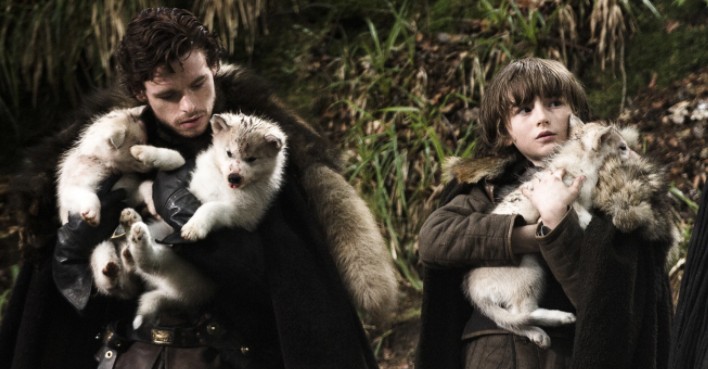Game of Thrones is an epic fantasy drama on HBO. It features many different noble families all vying for a claim to a great throne which rules over all the various smaller kingdoms. There’s a huge following of 10 to 12 million viewers per episode. With this much popularity it should be no wonder that merchandise and other items featured on the show have also become popular. Wondering how all this relates to dog training? Well turns out each of the smaller kingdoms has an animal who represents their country. For one of the popular, key families, the Starks, these animals are known as dire wolves. While dire wolves, in the real world, are now extinct the popularity of the show has had folks seeking out “wolf dogs” or even “dire wolves” to raise as their own.

This isn’t the first time that this has happened. When the movie/s 101 Dalmatians came out, the demand for “those cute little dogs with spots” increased as well. But the difference here is that dalmatians are domesticated creatures. They’ve been bred over the course of centuries to come up with the spotted goof ball we know today. But what a lot of folks don’t realize is that dalmatians, “the firehouse dog” was originally bred to be guard dogs to guard and protect the firehouse equipment from thieves. Other examples were of Finding Nemo resulting in a increase in clown fish sales (to people who have no idea how difficult salt water fish are to raise!) Besides traditional media social media has also affected pet trends. Esther the Wonder Pig a popular social media star sparked a large number of folks seeking out pigs (and even the terrible “micro” pig) to keep as their own!
The key point of all of these stories is that people like to emulate what they see in their media. They see the amazing bond between the Starks in Game of Thrones and their dire wolves and they want to have that same bond with their own dogs. Which on the surface I have no issue with, but beneath that there is a trend for folks to adopt or buy dogs that are well beyond their ability to handle.
Dog breeds all have a specific purpose they were originally bred for. Even though you might not be needing a sled dog, if you buy a purebred Alaskan Malamute or Husky, you will end up getting one. These dogs, especially those who are closer to the true standard of what defines a Malamute or Husky, the more of those original breed tendencies you’ll end up with. For the malamute this means
- Howling/barking which they use to communicate over long distances,
- Huge, epic levels of shedding 1-2 times a year and daily brushing to keep their thick warm coat in check
- Highly intelligent, escape artist who is an expert digger and climber
- Energy level requiring intense physical and mental exercise every single day for the rest of their lives.
Luckily before walking into a “their so dang cute” trap as a puppy, you can (AND SHOULD!) research the breeds that make up your pup or new adoptive pet. There is a great website called Dogtime which allows you to search by breed to identify common traits that breed likely will exhibit – http://dogtime.com/dog-breeds Of course there are always outliers. Not every Husky will dig, not all Malamutes will howl at night, but for a majority of them they will.
For mixed breeds, like my own two dogs, you can look up both breeds and get an idea of what types of behaviors you might see in your new pet. Esther is a mix of a Jack Russell Terrier and a Shih Tzu – both breeds who rank extremely highly on prey drive and judging from how quickly Esther can chase a rabbit out of the yard, I can attest is a very accurate statement. It’s not a 100% guarantee but it can help you guy your choice for a new pet by what will fix best with your family.
Totally lost as to what pet to get, you can check out dogtime’s pet quiz to attempt to find breeds that fit best with your lifestyle. Answer the questions as best and truthfully as you can and it’ll list a few of the top dog breeds that best fit your lifestyle and needs. Try it out here: http://dogtime.com/quiz/dog-breed-selector
Let me know in the comments what your top dog breed was!
